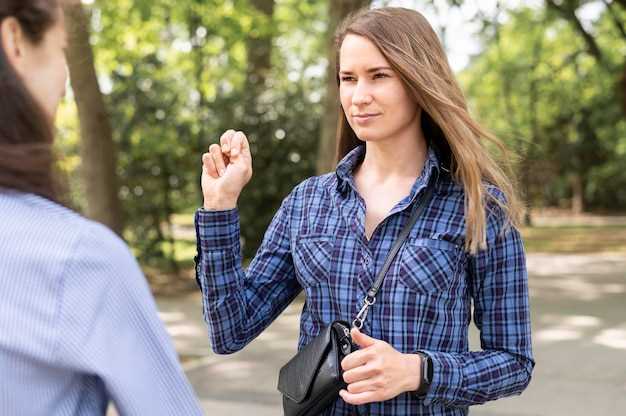Start with a sharp opening line that signals your meaning and invites a real response. A thoughtful opener sets the tone, helps you stand out on the street, and increases the chance that youll be attracted and will get a strong response. Make a clear point about what you value, and keep it specific and friendly so its meaning is clear within seconds.
Post 4–6 photos that tell a story. The earliest image should be a clear, friendly face shot in natural light. Avoid leading with shirtless pics; they can misrepresent your personality. Include at least one shot that shows you in action (a walk, a hike, cooking) to boost appeal and set honest expectations. A cohesive photo sequence raises the percentage of matches who are attracted and more likely to respond.
Write a brief bio that centers on concrete interests, values, and what you offer on a date. Use 2–4 sentences with specific examples, not vague claims. Mention a concrete activity you enjoy around your city: a coffee walk, a street-food tour, or a museum visit. Use clear language and a touch of humor to convey friendliness and authenticity, so readers know what to expect within a casual date.
Craft openings referencing a detail from photos or prompts. End with a question to prompt a reply. A good opening reduces friction and raises the chance of a response. Youll see better engagement when you mix a personal touch with an easy activity idea.
Adopt a simple system to refresh your profile every 6–8 weeks. Update photos, tweak bio lines, swap prompts to reflect current interests. Track two metrics: response rate and percentage of matches who initiate; use that data to improve your appeal. Small changes can push results around a few percentage points in overall success.
Be mindful of safety and boundaries; propose a first date in a public setting. Offer concrete options like a coffee walk around a busy street market, or a short museum visit. Keep the conversation light, a bit playful, and focused on shared interests. When the chat feels easy, suggest a date idea that aligns with both your interests, so the transition from message to plan feels natural.
Photo selection: curate 4-6 authentic, high-quality images that tell your story
Choose 4-6 authentic, high-quality images that tell your story. Lead with a clear portrait that features your face in natural light, then add realistic context shots that reveal how you spend time. According to data from dating apps, profiles with a balanced mix get a higher rate of responses from everyone.
Balance your gallery with 2-3 solo portraits and 1-2 lifestyle shots that show you in action. A shot with food or in a casual social setting adds opening energy. For a girl or guy, the rule stays the same: every image should feel natural and not overproduced.
Each photo must feature your face clearly; avoid photos where you or your eyes are cropped out. here are three points to check for every image: sharp focus, natural lighting, and readable background. Avoid common errors that occur like blur, over-editing, or a harsh color cast. If a shot gets dim or noisy, replace it instead of forcing the look.
To maximize impact, use a simple system for selection. Create a 5-point rating for each image: 1-5 stars for clarity, lighting, and vibe. A higher score means the shot is more likely to trigger conversation. whatever your vibe, include a few candid frames that feel spontaneous instead of staged, cant rely on a single glam shot, and elevate your profile with a little consistency.
When you shoot, think about opening lines and talk-starts. The first image should feel welcoming, with your smile and posture inviting chat. The second and third images can show your interests, like a hobby or a meal at a café, which gives you tangible conversation points. You can use a natural setting with your company nearby, or solo if you prefer; and the key is balance while you build your opening story. You might even include a shot that nods to a shared memory with a friend, or a fun moment with a girl in your life.
Ask a friend, like marley, to review the set in chat and provide tips. A quick 5-minute chat can reveal errors you missed and help rate which images stay. heres a quick guideline: keep unlimited angles available, but prefer a coherent look rather than a scattered palette. obama and opportunity vibes can appear in the energy, not in politics.
this approach creates an opening for conversations and a higher rate of replies. Don’t worry about chasing perfection; whatever you capture, aim for realism, authenticity, and consistency across the 4-6 images. The photos you use should be realistic and suitable for your profile, not used just for a flashy look.
Photo mix and sequence
Start with a crisp solo portrait that clearly reads your eyes and smile, then follow with 1-2 context shots of daily life. Include at least one scene with food or a casual hangout to show sociability. Add a hobby or activity moment and finish with a candid, natural expression that feels spontaneous. Keep the set cohesive in lighting and color so your grid looks balanced and inviting.
Quality and setup
Capture at least 1080p-resolution images in soft, natural light. Use simple backgrounds, avoid heavy filters, and keep cropping to keep your face centered on the upper third. Save JPEGs with minimal compression to preserve detail, and review colors on your screen to prevent color shifts that distract from your story. Use a straightforward workflow or system so whatever you shoot can be quickly evaluated by friends like marley, ensuring you present your best, most authentic self.
Bio and prompts: craft a concise, witty hook that reflects your personality
Write a single-line hook that states your goal and vibe. It could mention your town, your pace, and your curiosity. Keep it tight so responses stay high. A punchy hook speeds up the match process and confirms your energy without bragging. This line should be based on real quirks that feel authentic rather than generic fluff. Example: “Town-born trivia nerd who takes coffee slow, then shoots quick responses.” That line grabs attention, signals your goals, and sets a tone you can maintain through the first messages.
Pair the hook with a prompt that invites conversation. Use a direct question that can be answered with a tiny story. It should be based on scenarios and a concrete detail from your life–like a hobby, a weekend ritual, or a favorite set of pictures. This approach tends to raise the quantity of messages and helps you know whether the other person is a good fit. It also reduces negative responses by steering the chat. Also, set a boundary: don’t be an asshole in your opening.
Offer prompts that reveal your preferences and tell a quick story. For example: “What time of day would you cancel plans for a good story?” or “Tell me about a moment when you learned something surprising.” These prompts build attention and invite a response. If you find yourself in a few bad replies, don’t panic–happens; adjust. Based on the feedback, you can tweak the tone, aim for fewer words but more impact, and confirm that your profile is based on honesty rather than hype. A light reference to obama, used sparingly, can soften the tone. If you want to keep things practical, mention a picture from your collection or a small ritual you gonna keep. This approach tends to produce higher-quality responses and makes the overall goal easier to achieve.
Examples
Hook: “Could we skip the small talk and trade two-sentence stories instead?”
Hook: “Town-born trivia nerd who takes coffee slow, then shoots quick responses.”
Hook: “If you’re into late-night chats and good pizazz, I’m your slower pace with faster punchlines.”
Tag usage: choose specific interests and keywords to showcase your vibe
Choose 4-6 anchor interests and 2-3 keywords, and place them at the top of your bio to signal your vibe to the algorithm. Specific signals drive matched connections and reduce noise from others.
- Anchor interests should be concrete actions you actually do–hiking, food, travel, dogs, photography, or fitness. Avoid generic labels like “outdoors.”
- Pair each interest with a keyword phrase to create searchable signals: “hiking + healthy,” “food lover,” or “self-improvement.”
- Placement matters: front-load the first two lines with 3-5 keywords so whats
- Algorithm reality: platforms reward clear signals; a profile that mentions specific topics tends to be attracted by people who share those values.
- Quality checks: spelling matters; run a quick spell check to keep keywords consistent and discoverable.
- Update cadence: refresh keywords whenever your interests shift; last updated times help you stay current and keep percent gains in matches.
- Tone and safety: avoid negative framing; if you encounter an asshole, disengage and keep your bio focused on positive, real experiences.
- Set A: hiking, healthy, smile, food, self-improvement. Expect a percentage lift in matched connections: 12-22 percent higher compared to vague profiles when these keywords appear in the top lines.
- Set B: hiking, travel, dogs, photography, food. This combo broadens appeal to active explorers and pet lovers; you may see 10-18 percent more conversations in the first week.
Conversation starters: open with tag-based prompts that invite genuine replies
Lead with a tag-based prompt like [meet] to invite a concrete reply. Keep it short, specific, and open-ended so youve set a topic and made space for detail instead of generic chatter. You wont waste time on uncertain replies when the tag anchors the convo from the start.
Используйте подсказки, которые вызывают конкретику, а не похвалу; никогда не полагайтесь на общие комплименты. Например: [какая книга зажгла ваше воображение], [между двумя вашими любимыми ритуалами выходного дня], [может быть, вы могли бы поделиться небольшим моментом, который заставил вас улыбнуться в последнее время]. Эти строки повышают читабельность, приглашают к реальному ответу и заставляют другого человека почувствовать, что его видят, а не пробегают глазами. Также попробуйте запросить о вещи: «Чему бы вы научили друга на этой неделе?»
Чтобы получить искренние ответы, адаптируйте подсказки к реальным жизненным ситуациям. Спросите: [какие качества вас привлекают в партнере], [как бы ваши друзья описали ваше чувство юмора], [какую вещь вы недавно надели, которая, как вам кажется, соответствует вашей личности]. Эти подсказки раскрывают вкус, темп и чувство юмора, а также показывают, что вас интересует не только внешность. Что это говорит о вас?
Используйте теплые детали, чтобы разговор оставался человечным и приземленным. Попробуйте вопросы, затрагивающие семью или повседневные истории: [племянница], [воспоминание с любимой остановки в дороге] или [какой момент из детства до сих пор вызывает у вас улыбку?]. Если вопрос звучит неловко, отмените его и переключитесь на более легкий вопрос. Вам следует переключаться, когда это необходимо, и вы можете вежливо упомянуть фотографию без рубашки, сказав, что предпочитаете разговоры, выходящие за рамки внешности. Например: «Какой маленькой традицией вы бы поделились с племянницей?»
Подумайте о долгосрочных индикаторах, направляя беседы к основным темам, которые вам интересны, таким как путешествия, еда и распорядок дня, которые вам больше всего нравятся. Обращайтесь к функциям своего профиля, чтобы поддерживать аутентичность чата, и используйте то время суток, когда вы чувствуете себя наиболее способным дать продуманный ответ. Эти подсказки оказывают относительно большое влияние на поток сообщений и создают возможность перейти к реальной встрече, которая кажется естественной, а не заскриптованной.
A/B-тестирование: экспериментируйте с разными фотографиями и подсказками и отслеживайте, что работает
Проведите 7–10-дневный тест с 3 вариантами фотографий и 2 подсказками и отслеживайте свайпы, совпадения и разговоры в таких приложениях, как Google Sheets или Notion. Используйте базовый уровень из своего текущего профиля, затем сравните каждую комбинацию, чтобы определить, что на самом деле повышает подлинность взаимодействий и продвигает вашу скорость разговора вперед. Четкая система тестирования помогает вам оставаться на земле и учиться быстрее, чем гадать.
Что тестировать и как структурировать эксперимент
Фотографии: Вариант 1 - это дружелюбный крупный план, устанавливающий зрительный контакт и демонстрирующий теплоту, вариант 2 - это средний план на открытом воздухе, передающий энергию, а вариант 3 - это откровенный момент в действии, намекающий на хобби. Убедитесь, что хотя бы на одном снимке запечатлено подлинное движение – положение ног и осанка имеют значение, поэтому снимок, включающий шаги или естественную позу, может быть показательным, не будучи постановочным. Используйте фотографии, которые достоверно отражают вас, а не идеализированную оболочку себя. Это поможет вам выглядеть относительно расслабленным и доступным, а не отполированным до степени неаутентичности.
Подсказки: Подберите к каждой фотографии два побуждения, раскрывающие вашу стратегию разговора. Примеры побуждений: A) «Две правды и одна ложь: я прошел 12 миль пешком, я коллекционирую забавные кофейные кружки, однажды я разбил скорлупу, пытаясь приготовить». B) «Каким вы представляете себе идеальный выходной? Ищу кого-нибудь, с кем можно обменяться идеями о самосовершенствовании и забавными планами». Будьте дружелюбны и конкретны — негативные или расплывчатые формулировки, как правило, подавляют ответы.
Что измерять: свайпы, совпадения, начатые разговоры и средняя длина сообщения. Отслеживайте в простой таблице со столбцами для даты, варианта фотографии, подсказки, свайпов, совпадений, разговоров и заметок. Это позволит вам увидеть, группируются ли результаты вокруг определенной комбинации, работает ли данная подсказка лучше с определенной фотографией и какое влияние каждое изменение оказывает на вовлеченность.
Пример рабочего процесса: протестируйте все 3 фотографии с обоими запросами, меняйте их каждые 2–3 дня и отмечайте любое снижение активности, совпадающее с изменениями в вашей биографии или порядке профиля. Это поможет вам определить, что действительно работает, а что кажется отвлекающим фактором. Если одна пара вызывает всплеск позитивных разговоров, вы нашли выигрышный вариант, который стоит поддерживать подлинно.
Отслеживайте результаты, принимайте решения и повторяйте
Ведите текущий счет: назначайте небольшие баллы за каждый положительный сигнал (начатый разговор, сообщения, длящиеся более 4 обменов, предложение первого свидания). Сравните итоговые результаты по комбинациям, чтобы определить наилучшее сочетание. Если результат «в теневом бане» или показывает необычно низкую активность, подумайте, не сужает ли текст или изображение ваш охват, и внесите соответствующие коррективы. Относительно незначительные изменения, такие как замена шутливой фразы на более четкий вопрос, могут изменить эффект, не теряя вашего подлинного голоса.
Вне зависимости от того, сильный результат или слабый, используйте его как конкретную точку принятия решения вместо догадок. Если данные показывают, что один вариант стабильно превосходит базовый, отбросьте свои предубеждения и склонитесь к тому, что работает. Нарушьте свою рутину, попробуйте свежий угол и сохраняйте тон дружелюбным и любознательным. Этот непрерывный процесс поддерживает самосовершенствование, превращая обратную связь в действия, которые кажутся естественными и основанными на реальных взаимодействиях.
Заметки и советы: придерживайтесь конкретных и понятных идей, избегайте слишком ярких визуальных эффектов и убедитесь, что ваши ноги видны хотя бы на одном кадре, чтобы передать непринужденное движение. Хорошо структурированная система помогает вам четко видеть эффект, чтобы вы могли быстро повторять и избегать чрезмерных размышлений. Если результаты неоднозначны, вы можете внести небольшое изменение, например, новый запрос, задающий конкретный вопрос, а затем повторно протестировать. Такой подход помогает поддерживать динамику и оставаться самим собой в каждом свайпе.

 How to Create a Tasteful and Successful Tinder Profile">
How to Create a Tasteful and Successful Tinder Profile">

 Понимание четырех типов привязанности — дорожная карта к здоровым отношениям">
Понимание четырех типов привязанности — дорожная карта к здоровым отношениям">
 No Contact Rule Explained – How It Works to Get Your Ex Back">
No Contact Rule Explained – How It Works to Get Your Ex Back">
 Should You Be Friends with Your Ex? 3 Key Questions to Ask Yourself">
Should You Be Friends with Your Ex? 3 Key Questions to Ask Yourself">